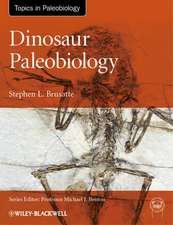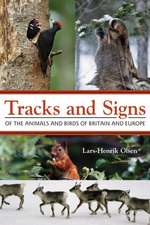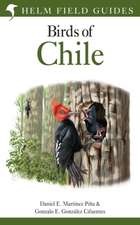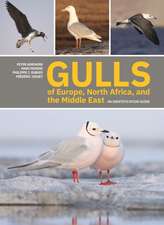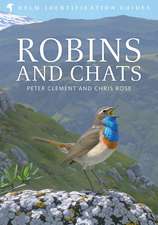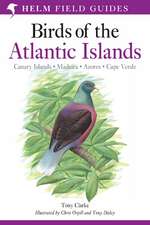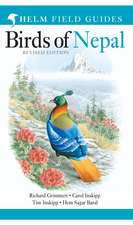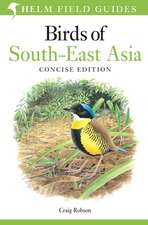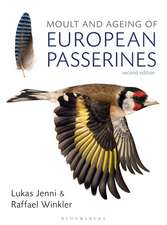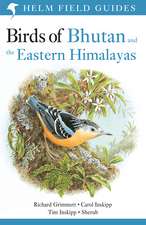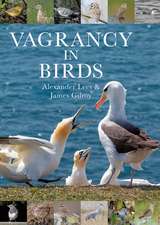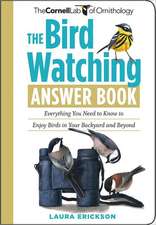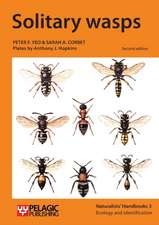The Biology of Moult in Birds
Autor Lukas Jenni, Raffael Winkleren Limba Engleză Hardback – 16 sep 2020
Preț: 381.13 lei
Preț vechi: 582.05 lei
-35% Nou
Puncte Express: 572
Preț estimativ în valută:
72.93€ • 76.14$ • 60.36£
72.93€ • 76.14$ • 60.36£
Carte tipărită la comandă
Livrare economică 05-19 aprilie
Livrare express 01-07 martie pentru 208.00 lei
Preluare comenzi: 021 569.72.76
Specificații
ISBN-13: 9781472977229
ISBN-10: 147297722X
Pagini: 320
Dimensiuni: 246 x 180 x 24 mm
Greutate: 1.1 kg
Editura: Bloomsbury Publishing
Colecția Helm
Locul publicării:London, United Kingdom
ISBN-10: 147297722X
Pagini: 320
Dimensiuni: 246 x 180 x 24 mm
Greutate: 1.1 kg
Editura: Bloomsbury Publishing
Colecția Helm
Locul publicării:London, United Kingdom
Caracteristici
Complementary to Jenni & Winkler's opus magnus, Moult and Ageing in European Passerines.
Notă biografică
Lukas Jenni was born in Basel, Switzerland, in 1955 and became interested in birds as a boy. While studying biology at Basel University he became a volunteer at the Swiss Ornithological Institute and a ringer at the Col de Bretolet ringing station, where his interest in moult and ageing began while working with Raffael Winkler. His graduation study dealt with the morphology and ecology of the Great and Middle Spotted Woodpeckers. In 1979, he became head of the Swiss ringing scheme at the Swiss Ornithological Institute and gained his PhD in zoology with a study of the mass concentrations of Bramblings in winter in 1984. He became a lecturer at the University of Zurich in 1997 and a professor in 2013, and was appointed scientific director of the Swiss Ornithological Institute in 2000. His research focuses on bird migration and its ecophysiology, the ecophysiology of stress, and the moult of birds. He is also involved in many other projects at the Institute, and supervises studies in avian ecology and conservation.Raffael Winkler was born in 1949 in Basel, Switzerland. Interested in birds since his early childhood, a stay at the Station Biologique de la Tour du Valat in the Camargue convinced him to study zoology. At the University of Basel he attended lectures in zoology, botany, palaeontology and psychology, and graduated with a PhD thesis on the pneumatisation of the skull roof in birds. The data for this study were collected at the ringing station at Col de Bretolet in the Swiss Alps, where he began a close co-operation with Lukas Jenni in the study of passerine moult, ageing and bird migration. Raffael was employed at the Swiss Ornithological Institute from 1975 to 1980, and managed the avifaunal information centre and developed outreach programs with amateur birdwatchers. During this time he was secretary of the Swiss Rarities Committee, and worked on The Atlas of Breeding Birds in Switzerland. In 1980 he was elected curator of the bird collection at the Natural History Museum, Basel, where he edited The Avifauna of Switzerland and carried on the Museum's own tradition in moult research. He retired in 2012 and now works as a voluntary ornithologist at the Basel Museum.
Cuprins
PrefaceChapter 1: Functions of the plumageChapter 2: Plumage maintenance and the need for plumage renewalChapter 3: The process of moult: feather growth, physiology, energetics and control of moultChapter 4: The effects of environmental conditions during moult on plumage quality and their consequencesChapter 5: Fitting moult into the annual cycle: moult strategiesReferencesIndex
Recenzii
A tour de force, covering aspects of moult which most of us had never considered.
It's easy to recommend this book; extremely well written, clear and avoids overly technical language ... the authors are true masters of moult.
An outstanding book that fills a necessary gap in our current understanding of this essential and far-reaching process . we found the book novel, necessary, and inspiring, and we are excited to see the developments it will trigger.
Lukas Jenni and Raffael Winkler present the most comprehensive review of all aspects of molt . Fascinating and inspiring, equally for learning about existing knowledge and for perceiving areas that need major attention within ornithology . it distills an incredible amount of information relevant to both newcomers and old-timers working on molt. It not only creates a hunger for the subject, but it . tasks us to give molt its proper place: a central theme in ornithology.
It's easy to recommend this book; extremely well written, clear and avoids overly technical language ... the authors are true masters of moult.
An outstanding book that fills a necessary gap in our current understanding of this essential and far-reaching process . we found the book novel, necessary, and inspiring, and we are excited to see the developments it will trigger.
Lukas Jenni and Raffael Winkler present the most comprehensive review of all aspects of molt . Fascinating and inspiring, equally for learning about existing knowledge and for perceiving areas that need major attention within ornithology . it distills an incredible amount of information relevant to both newcomers and old-timers working on molt. It not only creates a hunger for the subject, but it . tasks us to give molt its proper place: a central theme in ornithology.



